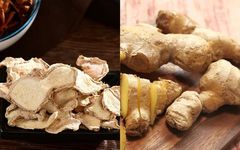⇧Click the above “Jing Yi Guo Xue” and reply with “Secret Recipe” to obtain the “Special Recipe for Treating Pharyngitis”
Fresh ginger (Sheng Jiang) and dried ginger (Gan Jiang) both belong to the Zingiberaceae family and are the rhizomes of the ginger plant. The difference lies in that fresh ginger is the fresh rhizome of ginger, while dried ginger is the dried rhizome of ginger.
When used as a traditional Chinese medicine (TCM), fresh ginger is sliced and used raw; dried ginger is a processed product made by slicing the rhizome and then sun-drying or low-temperature drying it.
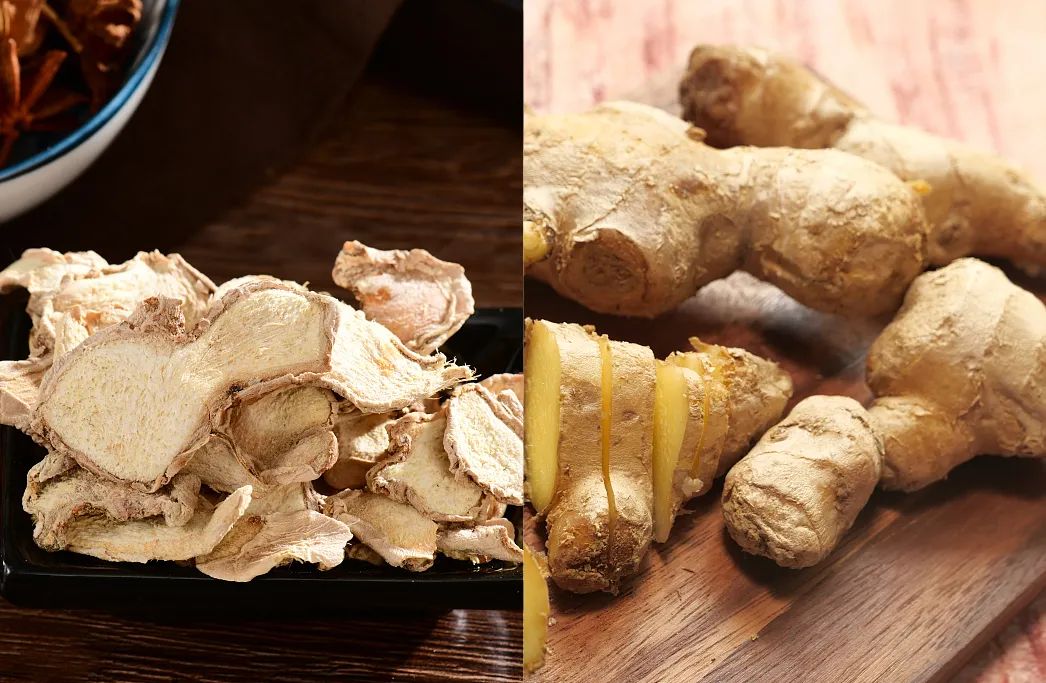
The difference between fresh ginger and dried ginger actually begins at the selection of the medicinal material. Fresh ginger is the young ginger used in cooking, while dried ginger is often made from aged ginger, also known as mother ginger (Mu Jiang). The tender fresh ginger is sprouted from the old ginger.
Now, through processing, old ginger is dried into dried ginger, which inherently has a warming property that is further enhanced; its dispersing effect is also further weakened. Some may ask, if we do not use old ginger and instead dry the fresh ginger used for cooking, would there be a difference in effect compared to old ginger?
For example, when we buy Fu Zi Li Zhong Wan, you may notice that sometimes it is particularly spicy, while other times it is not as spicy. This spiciness mainly comes from the flavor of dried ginger. Dried ginger made from old ginger will have a particularly pronounced spiciness, and the warming effect will be better; if it is made from regular cooking ginger, the spiciness will not be as pronounced, and the effect will be somewhat inferior.
Fresh ginger and dried ginger are two different TCM herbs with different effects.
1. Dried Ginger
Dried ginger is also known as Bai Jiang (White Ginger), Jun Jiang (Uniform Ginger), Pao Jiang (Boiled Ginger), and Dan Gan Jiang (Light Dried Ginger). Its properties are pungent and hot, and it enters the Spleen (Pi), Stomach (Wei), Kidney (Shen), Heart (Xin), and Lung (Fei) meridians. Its functions include warming the meridians and dispersing cold, returning yang and unblocking the vessels, drying dampness and resolving phlegm.
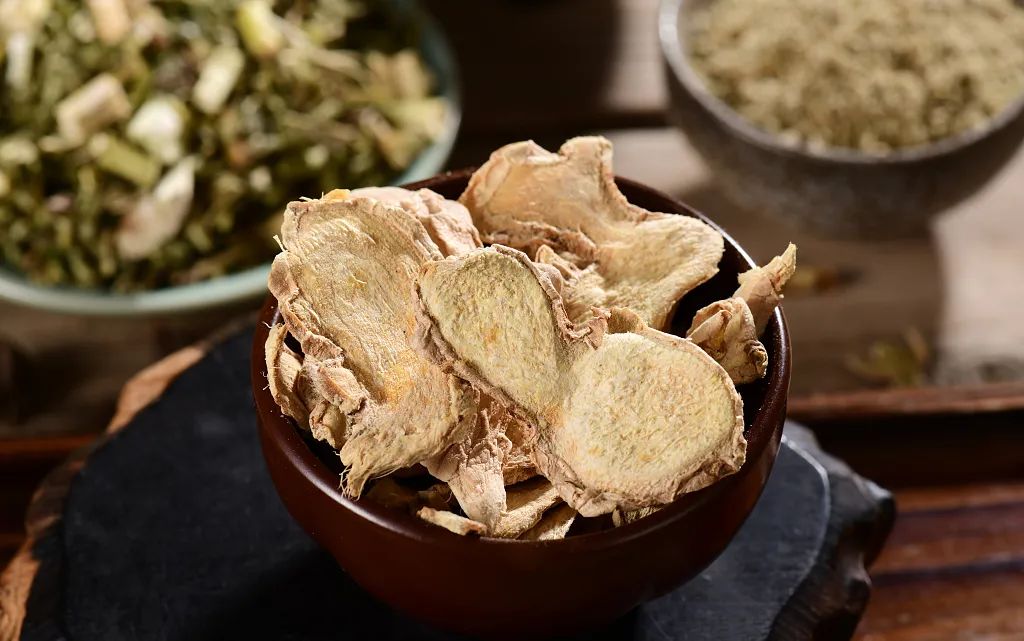
In the Ming Dynasty, Li Shizhen stated: “Dried ginger is made from mother ginger… the best is the white, firm ones, which were previously called Bai Jiang, also known as Jun Jiang.” Dried ginger can guide blood medicines into the blood aspect and qi medicines into the qi aspect, and it can also remove the old and nourish the new, embodying the principle of yang generating yin, thus it can be used by those with blood deficiency.
Dried ginger is spicier and hotter than fresh ginger, capable of dispersing qi and moving blood, and is generally used in medicinal preparations; it should be avoided by those with yin deficiency and internal heat.
2. Fresh Ginger
Fresh ginger has a pungent and warm property, entering the Lung (Fei), Spleen (Pi), and Stomach (Wei) meridians. Its functions include releasing the exterior and dispersing cold, warming the middle and stopping vomiting, and warming the lungs and stopping cough. It can also resolve poisoning from raw Ban Xia (Pinellia ternata), raw Nan Xing (Arisaema), and food poisoning from fish and crabs.

Unlike dried ginger, fresh ginger can be eaten directly and has many health benefits. “Eating more ginger regularly benefits longevity and health,” for example, holding ginger in the mouth warms the chest, and ginger juice mixed with milk can protect the stomach.
In addition to consumption, there are many external applications of ginger. In winter, elderly individuals with weak bodies often have cold hands and feet, and they should soak their feet before bed. Adding ginger juice to the foot-soaking water can better alleviate the symptoms of cold hands and feet.
Ginger moxibustion is a traditional TCM therapy where slices of fresh ginger are placed on acupuncture points, and then an appropriate-sized moxa stick is placed on top and ignited. For example, performing ginger moxibustion on the navel can effectively relieve motion sickness and stomach pain.
Other Uses of Ginger
Purple Ginger in Dishes
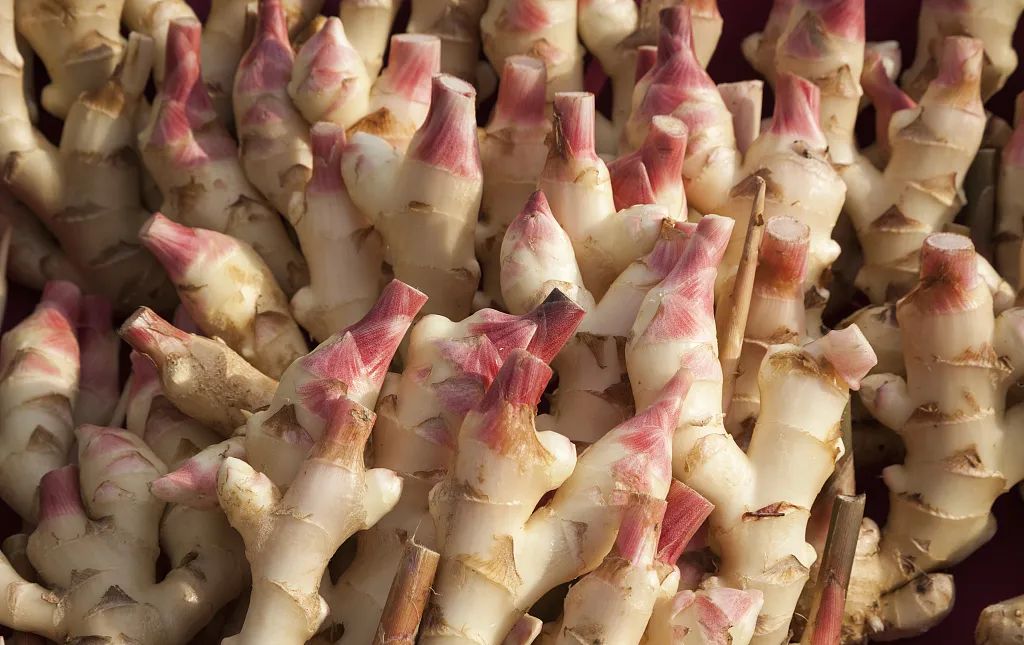
Purple ginger has tender shoots, named for its purple tips. Purple ginger is high in moisture, rich in ginger juice, and low in fiber, making it excellent for stir-frying or making sauces and pickles, with a very good taste.
Ginger Peel for Diuretic Use
There is a saying that “keeping the ginger peel is cooling, removing the ginger peel is heating.” If someone exhibits symptoms of internal “heat” such as constipation, bad breath, or oral ulcers, it is best to eat only the ginger peel and not the ginger flesh. This way, the diuretic effect of the ginger peel can be fully utilized while avoiding the heating nature of the ginger from exacerbating the condition.
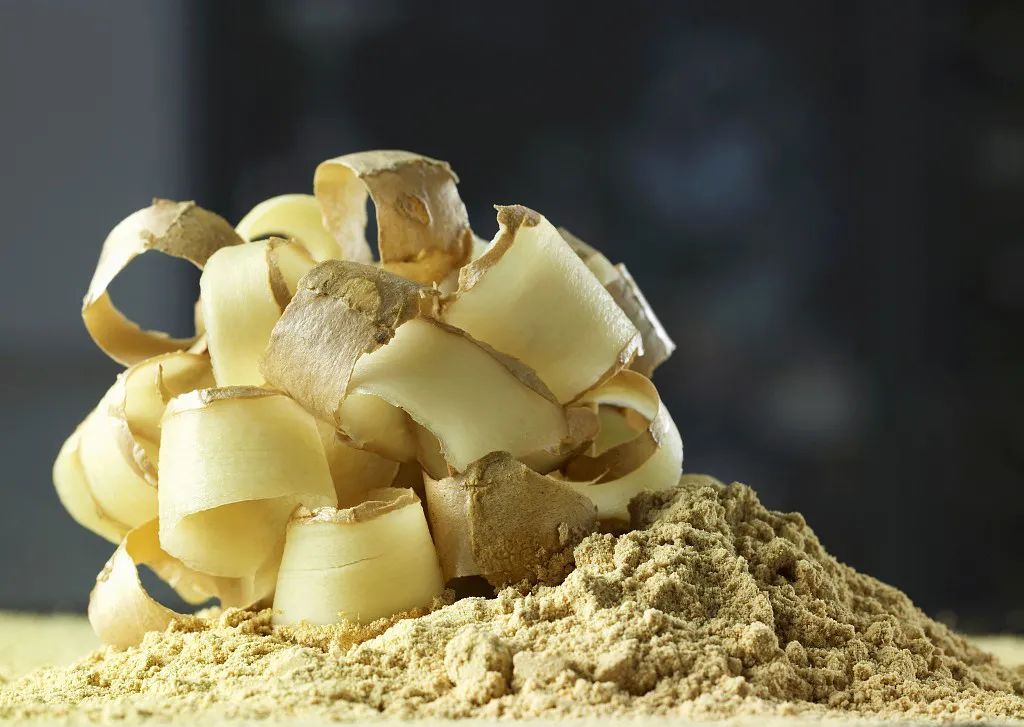
At the same time, boiling ginger peel with winter melon peel and watermelon peel to drink can also have good diuretic and swelling-reducing effects.
I am Jing Yi Xiao Fu Zi, a lover of TCM, dedicated to spreading TCM culture. If you encounter any problems in your studies, feel free to leave me a message! Any questions are welcome! Add me as a star, and you won’t miss my daily sharing of good articles!

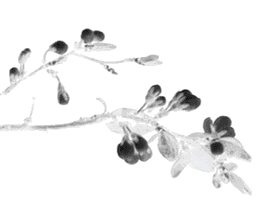
 Long press to recognize the QR code to follow usFeel free to recommend me to your family and friends!
Long press to recognize the QR code to follow usFeel free to recommend me to your family and friends!



